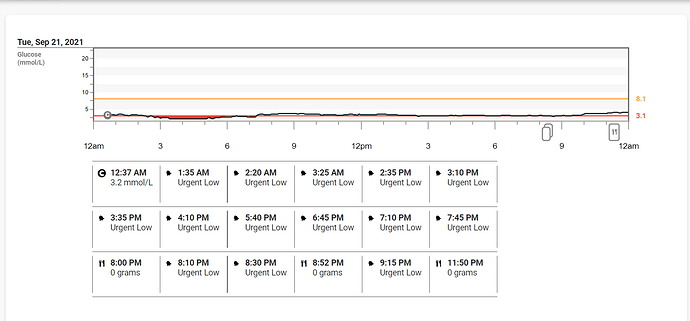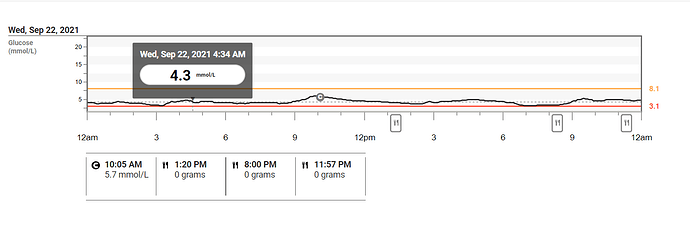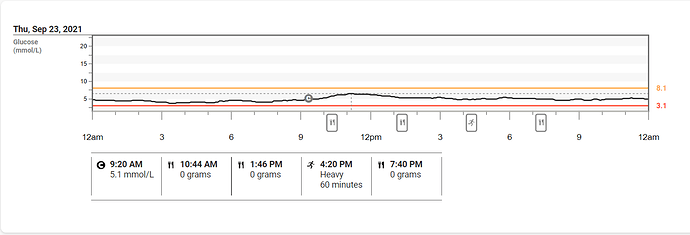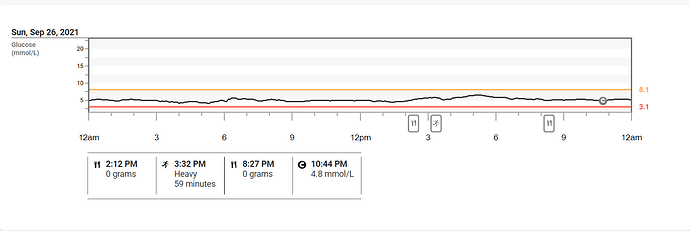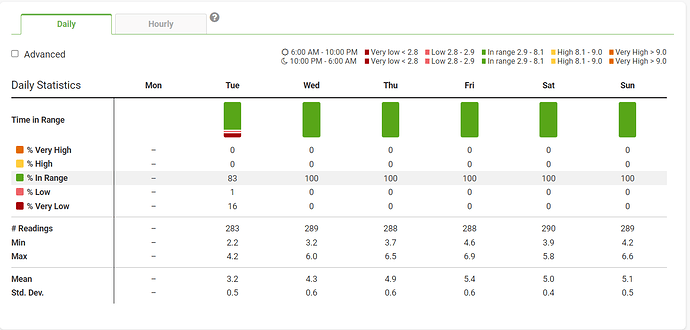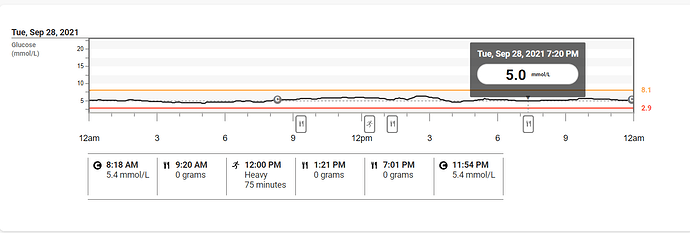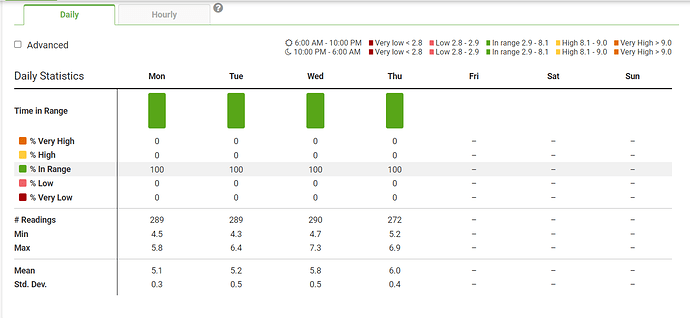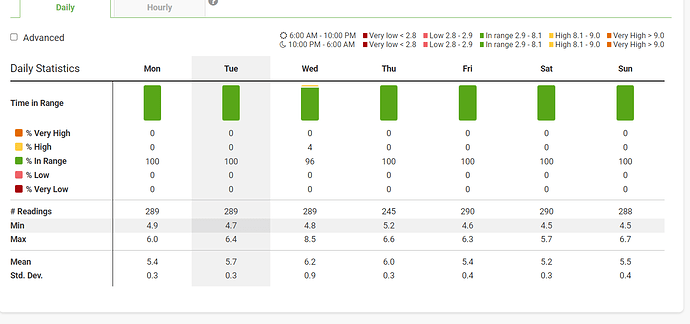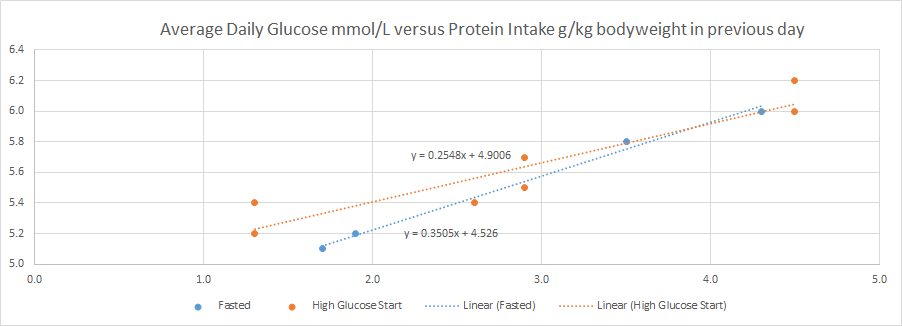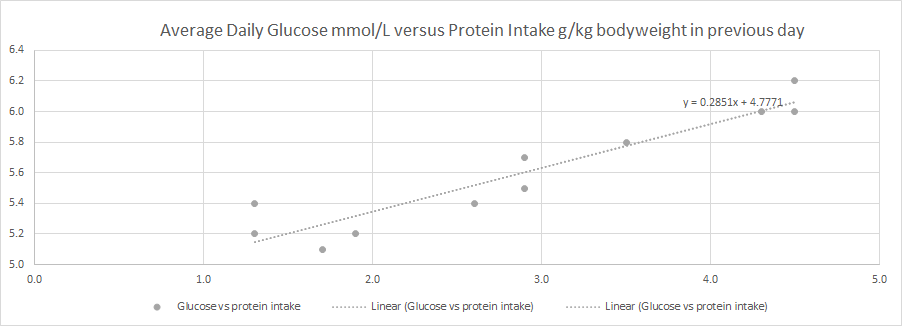Stats: Male, 168 cm, Weight is 142 lbs or 64.3 kg (started at 139 lbs/63 kg ended up at 64.3)
After doing a fast in August I went Beef only carnivore, at the forums suggestion that protein was irrelevant to blood glucose, even as a diabetic (despite my research from before I joined this forum stating otherwise), I decided to go ahead and eat very high protein loads and just keep tabs on my glucose readings. Using my finger prick blood glucose monitor, it seemed quite apparent that my glucose readings were very much affected by my protein intake. The problem with finger pricks, is they are unreliable. I cut back on the protein and my finger pricks returned to normal levels. How much of an effect does protein have on blood sugar levels though? In order to determine this, I planned and tested a 10 day CGM protein test. I also wanted to see my body’s reaction to the re-introduction of food/protein after a long fast.
Here is what I did to prove (to myself at least so I can plan my diet according to the facts and not the unsubstantiated dogma) that protein affects blood sugar levels.
- Fasted for 7 days straight, I put the CGM during the last day of the fast/refeed day
- Ate as much protein as I could handle for the first 4 days (I actually got nauseous and had to cut back on after day 4, I had stomach/gall bladder pains and diarrhea) and brought my glucose readings above my expected baseline (based on daily measuring for the past 4 months) - up to 5.4 mmol/L
- Cut back to two protein meals a day and let my glucose drop down to a steady state for 3 days (shows with around 650 g of meat a day, my average glucose is about 5.1 mmol/L).
- When my baseline was established and I physically felt better, I greatly increased my meat intake and watched as my glucose levels quickly rose by a full point up to 6 mmol/L in just 3 days of extra eating.
Conclusion: There is absolutely zero doubt that protein intake (or at least intake above the standard doses) greatly affects my blood glucose readings. I am a type 2 diabetic (partially healed now), so the results may differ for others. However, based on Shawn Baker having an average glucose of over 7, I suspect this is true of everyone, not just the metabolically challenged. It is probably more noticeable with type 2 diabetics. It seems to take a half day/day for the extra protein to equate to higher blood sugar levels as the extra protein is converted to glucose.
Data:
Day 1
broke fast with 500 mL bone broth, 12 oz striploin and 7.5 bacon (see CGM for times), 20.8 oz + 500 mL = 590 g + bit = 600 g or so
Day 2
ate 1 lb buffalo ribs, 11 oz striploin, 6 pieces of bacon (200 g pre cooked = 7 oz), total 34 oz = 964 g
Day 3
ate 14 oz buffalo ribs, 14 oz T-bone+6 bacon (200 g pre cooked) , 35 oz = 992 g
Day 4
today ate 10 oz striploin with 3.5 oz liver, 10 oz ribeye and 7 bacon (8.2 oz = 233 g pre cooked), 31.7 oz = 899 g (started to feel stomach upset)
Day 5 - Felt nauseous and could not eat a lot this day, reduced eating a bit this day
could not finish 11.5 oz buffalo steak, ate 8? Oz for breakfast + 10 oz ribeye + 7 bacon and still could not finish buffalo, 26.2 oz=743 g
Day 6 reduced to 2 real meals a day for 2 more days
ate 10 oz striploin, small amount of buffalo tongue (3.5 oz?) with bone marrow and 7.5 bacon (8.8oz = 250 g pre cooked), 22.3 oz = 632 g
Day 1- though 6 daily Statistics
Day 7 - established baseline at 5.1 mmol/L over past 3 days
ate 10 oz ribeye, ate 7 bacon (233 g pre cooked) with 2 oz buffalo tongue, 20.2 oz = 573 g
Day 8
ate 10 oz buffalo ribeye, 10 oz striploin and 14 oz T-bone today, 34 oz = 964 g
Day 9
meal 1) 14 oz ribeye + 3 oz liver 2) 11 oz ribeye 3) 12 oz buffalo ribeye, 40 oz = 1134 g
Day 10
meal 1) 14.5 oz ribeye 2) 11.75 oz ribeye 3) 10 oz ribeye, 36.25 oz = 1028 g
Day 7 - 10 daily statistics
Looking for any interesting observations, thoughts or concerns about the data. I will note that in theory, my last two days MAY have been as high as 4 g of protein by kg of bodyweight. Certainly more than needed.

